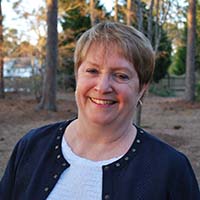Diversity & Inclusion – Getting Started & Gaining Traction
Perhaps you are like many executives and human resources professionals – you’re uncertain about how to get Diversity & Inclusion (D&I) off the ground...
4 min read
 Barbara Deane
:
Mar 16, 2021 9:00:00 PM
Barbara Deane
:
Mar 16, 2021 9:00:00 PM

Below is the first article in a series exploring topics and learning from the 2021 NW Diversity Learning Series – Speak Up, Speak Out: Get into Good Trouble, Necessary Trouble. Learnings and reflection from the January session, “Hidden in Plain Sight: Examining the Values that Drive Disparity,” are the impetus for Part I.
“When your outcomes are predictable, your values are clear.” Have you ever thought about how transparent an organization’s values could be? Have you ever assessed your organization’s diversity, equity and inclusion outcomes in terms of your organization’s values? For example, if no person of color or woman is being promoted into higher-level positions in your organization, what value would drive that outcome? This novel approach to aligning outcomes to values was put forward by Matt and Colleen Echohawk-Hayashi, presenters of the first session (1/27/21) of the 2021 NW Diversity Learning Series, “Hidden in Plain Sight: Examining the Values that Drive Disparity.”
With calls for racial equity, anti-racist organizations, and systemic change to root out white supremacy, the #BlackLivesMatter movement boiled up long-standing issues of disparity to the surface—once again—laying them squarely in the C-suite and board rooms of American business. The NW Series, in collaboration with its corporate and non-profit sponsors, decided to focus on the positive goal of “systemic equity—NOW!” in 2021. We thought, “How could you have a serious conversation about systemic equity if you failed to consider the organization’s values?”
“Values are like fingerprints. Nobody’s are the same, but you leave ‘em all over everything you do.”
—Elvis Presley
Elvis was probably referring to individual values, but one’s personal values may reflect those of a family group, a neighborhood, a cultural or ethnic group, a town or region, an educational institution, a company or organization, or a country. In other words, values come out of groups of people. In 52 Activities for Exploring Values Differences, Stringer & Cassiday describe values as “…deeply held beliefs that determine what is ‘good, right, and normal’ and what is ‘bad, wrong and abnormal’ among members of a cultural group.” Values tell members of a group the appropriate ways to act and be.
Edgar Schein, a noted writer on organizational culture and leadership, says in his book, Organizational Culture and Leadership, “All group learning ultimately reflects someone’s original values, someone’s sense of what ought to be as distinct from what is.” He adds that when a group first starts out, or faces a new issue or problem, “the first solution proposed to deal with it reflects some individual’s own assumptions about what is right or wrong, what will work or not work.” He suggests that as these “solutions” arise, they work their way into the group’s worldview, becoming “espoused values” that the group says are important. Although espoused values may well predict what a group of people will “say,” they may not align with what the group actually “does.”
As Matt and Colleen Echohawk-Hayashi explained, a company or organization may espouse the values of “equity,” “fairness,” “inclusion” and “shared prosperity,” but their outcomes may not bear out these values at all.
The Echohawks pointed out countless examples of systemic disparities experienced by people of color, such as:
For example, in an article by Phil Whaba from Fortune Magazine, only 1% of the Fortune 500 companies have Black CEOs at the helm (a total of five individuals). Since 1999, there have only been 18 Black CEOs on the Fortune 500 lists—ever.
The systemic disparities surfaced by the #BlackLivesMatter movement are not new for Black and Brown people in the United States. They have always been here. Consider the following quotes from Managing White Supremacy: Race, Politics, and Citizenship in Jim Crow Virginia, by Douglas Smith:
John Robert Lewis, the venerable civil rights icon (1940 – 2020), was instrumental in holding the American government accountable for its value that “all men [and women] are created equal.” After Lewis helped orchestrate the passage of the Voting Rights Act in 1965, he and others in the civil rights movement soon realized they had to turn their attention to more subtle and complex challenges. In His Truth Is Marching On, Meacham points out that this involved “dealing with attitudes and actions held deep inside people and institutions.” Lewis recognized that even though white-dominant institutions “were forced to let us through the door, [they] could still keep the rewards inside those doors out of our reach.” Although Lewis didn’t use the words directly, he recognized the challenges of deep-rooted values and systems that guard the opportunities and rewards.
A lot of white folk in companies and organizations have been awakened by the murders of unarmed Black people and the protests of the #BlackLivesMatter movement. They want to do something.
We, at the NW Diversity Learning Series, suggest a good place to start is by examining your outcomes—what do your current demographics tell you? How are women of color, men of color, doing in your organization? At what levels are they? What does data from your employee engagement or satisfaction survey tell you? After answering these questions comes the more difficult analysis and conversation about your organizational values—what are the values you espouse versus the ones that explain your outcomes? What values really operate that explain your outcomes? What values really guide the decisions you make? Do you favor the comfort of working with people who look like you and act like you? Consider this, in favoring comfort, are you contributing to the preservation of white privilege and supremacy or rugged white individualism? And are you protecting the economic position and wealth of white people because you have benefitted from it?
This is the hard work of getting to systemic equity. It requires personal soul searching, deep organizational assessment, and a systematic approach to change. As Matt and Colleen Echohawk-Hayashi said, “When your outcomes are predictable, your values are clear.” The values that drive disparities are not a secret—they are hidden in plain sight.
To learn more about the NW Diversity Learning Series and how your company can participate, visit the NW Diversity Learning Series’ website. There are upcoming sessions scheduled for May, June, September, and November.
Barbara Deane and Effenus Henderson are the co-directors of the Institute for Sustainable Diversity, Equity and Inclusion, which manages and presents the NW Diversity Learning Series. The Series was founded in 1998 by Seattleites Barbara Deane, Susan Funk and Carlos Gil. It is a well-regarded educational resource for Diversity, Equity and Inclusion in the greater Seattle area, and has been for 23 years. Matt Echohawk-Hayashi and Colleen Echohawk-Hayashi are organizational development consultants from the Seattle firm, Headwater People.

Perhaps you are like many executives and human resources professionals – you’re uncertain about how to get Diversity & Inclusion (D&I) off the ground...

The What and Why of Succession Management Did you know that we are living through a time of great workforce upheavals? There are some significant...

1 min read
According to the CDC, when COVID-19 entered our lives in 2020, employee wellness was already a strong corporate focus, with almost half of all US...